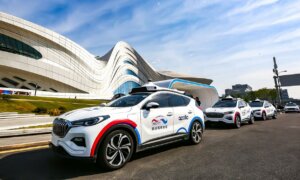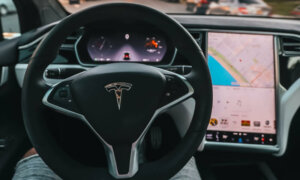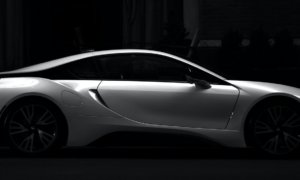When it comes to self-driving cars, consumer automobiles are the first to come to mind; Tesla, Waymo, Uber and more have self-driving cars in the works or in their fleets. However, Stanford University is testing out bringing autonomous capabilities to more situations, like professional racing.
According to Nathan Spielberg, a graduate student, Stanford wanted to test their autonomous vehicles, Niki and Shelley, a Volkswagen GTI and Audi TTS respectively, on adverse conditions like the limited friction of Thunderhill Raceway Park in Sacramento Valley.
“Our work is motivated by safety, and we want autonomous vehicles to work in many scenarios, from normal driving on high-friction asphalt to fast, low-friction driving in ice and snow. We want our algorithms to be as good as the best skilled drivers – and, hopefully, better,” said Spielberg.
To drive in these adverse conditions, Stanford’s autonomous vehicles incorporate both in-the moment evaluations (a standard of the autonomous driving industry) with physics-backed data from previous drives. Niki, for example, drove around icy tracks near the Arctic Circle and that data is used to inform their drive on Thunderhill.
This data uses physics to help inform difficult driving situations. For example, on icy roads, autonomous cars using current methods may not be able to perfectly determine the best way to steer and correct itself. By using physics data like road-tire friction, the system can be more flexible and responsive to the situation.
“With the techniques available today, you often have to choose between data-driven methods and approaches grounded in fundamental physics. We think the path forward is to blend these approaches in order to harness their individual strengths. Physics can provide insight into structuring and validating neural network models that, in turn, can leverage massive amounts of data.” said J. Christian Gerdes, professor of mechanical engineering and senior author of the paper on this topic.
In tests at Thunderhill, Shelley, loaded with a physics-based autonomous system and information about the course, ran comparable lap times as a skilled amateur driver. Niki did just as well when loaded with their physics based neural network system, even as it lacked the explicit information on road friction.
However, the researchers do point out that the physics based neural network system does not perform well on unexperienced conditions. But in the long run, this system could be the future of autonomous vehicles.
Follow TechTheLead on Google News to get the news first.






















